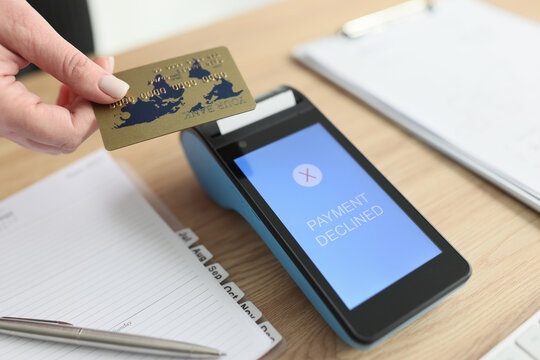Did you know businesses can lose up to 30% of their revenue to hidden electronic…

What Does a “Do Not Honor” Decline Mean?
Did you know that between 10% and 60% of failed payment attempts are marked with a “Do Not Honor” decline? This statistic highlights just how common it is for transactions to fail without clear explanations. As a result, many people are left wondering why their payment was rejected.
When you encounter a payment rejection, it can be incredibly frustrating. Not only does it disrupt the transaction, but it also makes it difficult to determine the exact cause of the issue. This is because the decline code itself doesn’t provide a specific reason. Therefore, understanding what this code means is essential for gaining better insight into payment processing and, ultimately, improving your customer service.
Key Takeaways
- The “Do Not Honor” decline is a common occurrence in payment processing.
- This decline can represent a significant percentage of failed transactions.
- Understanding the reasons behind such declines can improve customer service.
- Ambiguous decline codes can complicate payment resolution for merchants.
- Knowing how to handle these situations can enhance payment acceptance rates.
Understanding the Do Not Honor Decline
A “Do Not Honor” decline code is a common reason for transaction rejections. It means a bank has decided not to approve your transaction, also known as a card issuer decline. But, it doesn’t tell you why. Knowing about these codes is key for your business and how you deal with customers.
What is a Do Not Honor Decline Code?
The do not honor decline code tells banks to reject a transaction. Reasons can include not enough money in the account or wrong card details. It might also hint at fraud concerns. Without clear reasons, merchants must try to understand why transactions are declined.
Importance of Decline Codes for Merchants
For merchants, understanding decline codes is essential. Knowing why transactions are rejected helps you fix problems and keep customers happy. By identifying decline causes, you can make transactions smoother and keep customers coming back.
Common Reasons for a Do Not Honor Decline
Knowing why a payment might be declined can make transactions easier. Many reasons lead to a “Do Not Honor” decline. This can really affect your shopping experience.
Insufficient Funds
One main reason for a decline is not enough money in the customer’s account. If there’s not enough cash for the purchase, the bank will say no. It’s a good idea to check your balance before buying.
Incorrect Card Details
Another common problem is when card details don’t match the bank’s records. Mistakes like wrong card numbers or expiration dates can cause a decline. This can be frustrating and might happen if you enter your card info wrong.
Suspicious Activity and Fraud Prevention
Banks watch for unusual spending to stop fraud. If a transaction looks off, they might block it to protect you and themselves. Knowing your spending habits can help avoid these issues. You might need to tell your bank about big purchases to prevent a decline.
Blocked Cards and Spending Limits
At times, a card can be blocked for reasons like hitting spending limits or fraud worries. This usually means a “Do Not Honor” code from the issuer. Knowing your card’s status can help avoid these problems and make shopping smoother.
How to Respond to a Do Not Honor Decline
Dealing with a “Do Not Honor” decline can be tough. But, with the right approach, it can lead to a successful transaction. Your response is key to keeping a good relationship with customers. Here are some ways to handle these declines well.
Seeking Alternative Payment Methods
Encouraging customers to explore other payment options is a smart move. By suggesting different ways to pay, you boost the chances of completing the deal. Giving them various choices makes them feel more confident in their purchases.
Informing Customers About the Decline
It’s important to clearly tell customers why their payment was declined. Explain it in a simple yet kind way. Let them know that sometimes, contacting their bank might be the next step.
Using Automated Follow-Up Emails
Automated emails can be a big help after a decline. They provide important details about the decline and how to fix it. This approach keeps customers happy and helps avoid future payment problems.
Conclusion
Understanding “Do Not Honor” declines is key for businesses. When a payment is rejected, it can slow down transactions and upset customers. But, by acting fast and talking clearly with your customers, you can lessen the problem.
Offering more ways for customers to pay can help a lot. Working with trusted payment services like IntegralPay can solve many decline problems. This makes it easier for customers to pay and keeps them happy.
Dealing with “Do Not Honor” declines can be tough, but there are ways to make it better. Contact IntegralPay for help with payment issues. They can also give you tips on making your payment system better.



Comments (0)